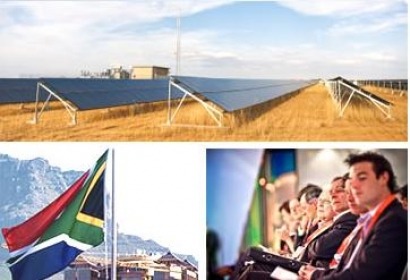
“The variable is around 3%. That means that on a good day, solar radiation in South Africa is 100% and 97% on bad days. These conditions are extraordinary,” says Dick Berlijn, managing director of Pretoria-based solar electricity development firm Subsolar Energy.
It is furthermore estimated that South Africa has over 2500 hours of sunshine annually – which comes down to one third of a year (four months including nightly hours).
“In that respect, the sun is more predictable and reliable than wind energy, and therefore more economically viable,” Berlijn adds. “When there is no wind, no electricity can be generated. When it storms wind turbines need to be shut down. Wind is in addition less predictable. On the other hand, the number of solar hours remains constant through the years.”
“Last but not least, the Rainbow Nation has ample space to build photovoltaic power (PV) plants, which convert sunlight into electricity using the Photoelectric effect,” adds Edwin Koot, CEO of SolarPlaza.
This is an international platform for solar energy stakeholders. The company is renowned for its solar energy conferences, of which it has organised over 30. The latest one is taking place in Johannesburg next year January.
“In the north of South Africa, there are hundreds of square kilometres of unutilized land which are perfect for PV,” Koot notes.
Research has shown that one hectare of PV can generate 1 MW.
“Therefore, here is no doubt that solar energy will become a competitive energy source within the next 10 years in South Africa,” he continues. “We see South Africa as Africa’s solar leader.”
The need for alternative sources of energy in South Africa is vital, and not only to meet the growing electricity demand. According to the International Energy Agency (IEA), South Africa pumped 369.4 million tons of carbon dioxide into the atmosphere in 2009. This makes the Rainbow Nation the 16th biggest carbon dioxide emitter.
This is largely due to the fact that over 90% of South Africa’s electricity is generated from coal. Figures by the IEA show that our country consumed 194 million short tons of coal in 2008 (91% of all the coal consumed on the entire African continent in that same year).
South Africa’s solar energy potential will be among the topics during SolarPlaza’s Solar Future South Africa conference in Johannesburg on 25 January 2012.
For additional information:

